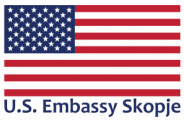The post-Cold War era has seen a rise in the far-right that has influenced European politics. There have also been increases in xenophobia and violence against immigrants, especially after September 11, particularly towards Muslim immigrants, refugees or those who support policies of multiculturalism. The far-right has moved ‘from the margins to the mainstream’ of European politics (Mudde, 2013: 2), as manifested in different fields since the turn of the century. The first one is the increasing votes for far-right parties in various local, national elections and European Parliament (EP) elections. Secondly, there has been rise in far-right organizations and far-right violence. Thirdly, there has been normalization and mainstreaming of far-right political discourse, which is the most dangerous one for the future of Europe because it has allowed the far-right to influence the agenda and discourse of mainstream parties, especially those of the Christian Democrats. These manifestations create crucial challenges for maintaining peace in Europe and continuing the European Union (EU) project. As the Oslo killings show, far-right tendencies are not only dangerous for immigrants and minorities; but they also threaten all European societies (Fekete, 2012). It is thus necessary to deal with the new far-right, not only in terms of electoral politics, but also in the other spheres where they have influence (Goodwin et al, 2012: 4).
Various concepts are used for referring to far-right parties, such as ‘radical right’, ‘populist’, ‘extreme-right’, ‘right-wing populist’ and ‘populist radical right’ (Mudde, 2007). Mudde (2014: 98-99) uses ‘far-right’ as an umbrella concept which includes both the extreme-right and populist radical-right. The ‘extreme right’ rejects democracy altogether, while radical-right accepts democracy but rejects liberal democracy, which includes pluralism and minority rights[1].
According to Wikipedia the definition of far rights in the U.S. is this: In United States politics, the radical right is a political preference that leans towards extreme conservatism, anti-socialism, and other right-wing beliefs in hierarchical structure. The term was first used by social scientists in the 1950s regarding small groups such as the John Birch Society in the United States and since then it has been applied to similar groups worldwide[2].
While the definitions are similar here is another one by the Friedrich Ebert Foundation, in a 2011 book, defines the terms “right wing extremist” and “right wing populist” differently. In 1996, the Dutch political scientist Cas Mudde noted that in most European countries, the terms “radical right” and “extreme right” were used interchangeably. He cited Germany as an exception, noting that among political scientists in that nation, the term “radical right” (Rechsradikalismus) was used in reference to those right-wing groups which were outside the political mainstream but which did not threaten “the free democratic order”; the term was thus used in contrast to the “extreme right” (Rechsextremen), which referred to groups which did threaten the constitutionality of the state and could therefore be banned under German law[3].
Equally broadly speaking the right wing are concerned with the principles of Conservatism which is a belief in upholding traditional established values and institutions such as the monarchy and the church. Conservatism is built on the idea of a defined national identity and embraces a monocultural rather than a multicultural society. Political Conservatism is linked to the idea of Capitalism, the idea that the economy is strongest when based on competing factions, with wealth in the hands of the few used to employ the many.
The extreme right wing would be Political Fascism. Fascism can be defined by the autocracy of a leader or government, a strong nationalist agenda and a pro uniformity approach. Diversity is not encouraged within a Fascist ideology. The emphasis is on conforming to the unified goals of the state.
The far right of which Resisting Hate and other anti-hate groups speak share certain key characteristics. The first is Nationalism. It is important to distinguish Nationalism from Patriotism. Patriotism being love of one’s country whereas Nationalism is the belief that one country and its people are superior to others. Patriotism can be found in both left- and right-wing politics. Nationalism is a right-wing ideology.
The right has a strong sense of national and cultural identity which can be a positive thing but the far right takes this further and perceive integration with other cultures as a threat to their sense of identity. In doing so they reject the concept of diversity and start to see those of different races or cultures as potential usurpers of their country and diluters of their cultural values. This can lead to unrest within communities and prejudice toward those not deemed to share the same racial or cultural background.
The far-right appeal to a sense of elitism. This is closely linked to the idea of racial and cultural preservation but with emphasis on the fact that a ‘superior’ community is being eradicated. This can be seen in far-right white supremacist groups who call for more breeding among white people to ensure their race survives the ‘threat’ of blood mixing with other ethnic groups. It is not hard to see how closely this elitism is linked to racism. It is equally not difficult to see how this idea of racial purity invites a parallel with the Nazi Germany obsession with the Aryan race.
In keeping with the idea of a traditional and, to a certain extent, homogenous society the far right rejects the liberal ideals of actualizing the self and condemn individuals who do not conform to their preconceived ideas of how people should behave. This is where we encounter gender and sexuality prejudice which is often deemed by the far right as unnatural human behavior. It is also where we encounter religious prejudice with the far-right self-identifying as defenders of the Christian faith and using the pretext of upholding Christian values as a way to cause conflict with other religions.
The primary tactic used in advancing a far-right agenda is the sense of urgency in defending a nation or community against an external threat. We have seen this throughout history with the persecution of people of color, homosexuals, Jews, Muslims and other minority groups. This was very clearly illustrated during the Brexit referendum with Nigel Farage’s infamous Breaking Point poster which sought to depict immigrants as invaders in order to unite and mobilize the far – right against a common ‘enemy.’
Meral Musli Tajroska – Psychologist, Expert on Violent Extremism and Radicalization and Activist for Gender Equality.
[1] https://dergipark.org.tr/tr/download/article-file/1610
[2] https://en.wikipedia.org/wiki/Radical_right_(United_States)
[3]https://en.wikipedia.org/wiki/Radical_right_(Europe)#Terminology_and_definition


